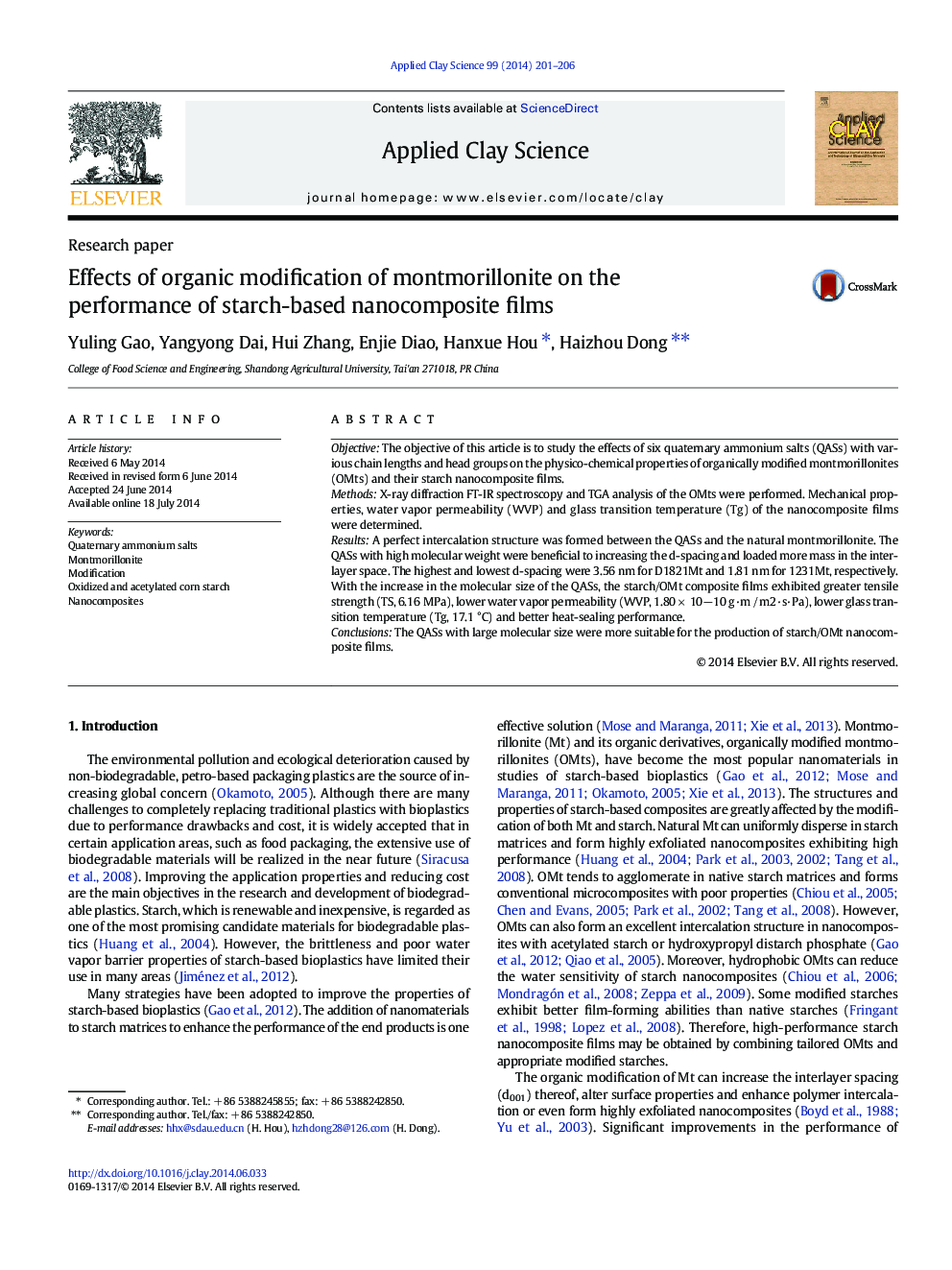| Article ID | Journal | Published Year | Pages | File Type |
|---|---|---|---|---|
| 1694751 | Applied Clay Science | 2014 | 6 Pages |
•The d-spacing of OMts was significantly affected by the chain length of modifiers.•The performance of starch films was significantly improved with the addition of OMts.•OMts and modified starches were well compatible.
ObjectiveThe objective of this article is to study the effects of six quaternary ammonium salts (QASs) with various chain lengths and head groups on the physico-chemical properties of organically modified montmorillonites (OMts) and their starch nanocomposite films.MethodsX-ray diffraction,FT-IR spectroscopy and TGA analysis of the OMts were performed. Mechanical properties, water vapor permeability (WVP) and glass transition temperature (Tg) of the nanocomposite films were determined.ResultsA perfect intercalation structure was formed between the QASs and the natural montmorillonite. The QASs with high molecular weight were beneficial to increasing the d-spacing and loaded more mass in the interlayer space. The highest and lowest d-spacing were 3.56 nm for D1821Mt and 1.81 nm for 1231Mt, respectively. With the increase in the molecular size of the QASs, the starch/OMt composite films exhibited greater tensile strength (TS, 6.16 MPa), lower water vapor permeability (WVP, 1.80 × 10−10 g·m / m2·s·Pa), lower glass transition temperature (Tg, 17.1 °C) and better heat-sealing performance.ConclusionsThe QASs with large molecular size were more suitable for the production of starch/OMt nanocomposite films.
